I can vouch for Devil’s Ivy (Epipremnum aureum), also known as Golden Pothos, being a low-maintenance and attractive indoor plant popular for its ornamental leaves. However, it can be affected by pests like spider mites, mealybugs, scale insects, and fungus gnats. If left untreated, these pests can kill the plant.
To protect your Devil’s Ivy, it’s crucial to take preventative steps. In this post, we’ll explore effective methods to ward off and manage pests. Following these tips will help keep your plant healthy, ensuring you can appreciate its beauty for a long time.
Identify the Pests
It’s essential to accurately identify the pest affecting your Devil’s Ivy plant to implement effective prevention and control measures. Common pests for Devil’s Ivy plants include:
Spider mites
Spider mites are small arachnids commonly found on Devil’s Ivy plants. They feed on the plant’s sap, damaging its foliage. They can also spin webs on the leaves, making the plant look unappealing and harming its health. Addressing spider mite infestations promptly is vital to prevent further damage.
Mealybugs
Mealybugs can harm your Devil’s Ivy plant by feeding on its sap and attracting ants with the honeydew they produce. These soft-bodied insects have a unique white, cottony appearance. If not addressed, they can lead to stunted growth, leaf drop, and plant death.
Scale insects
Scale insects are oval pests that appear on the stems and leaves of Devil’s Ivy plants. They consume the plant’s sap, leading to yellowing and dropping of leaves. They produce a sticky substance attracting ants and fostering black sooty mold growth. Early identification and control are vital to prevent major plant damage.
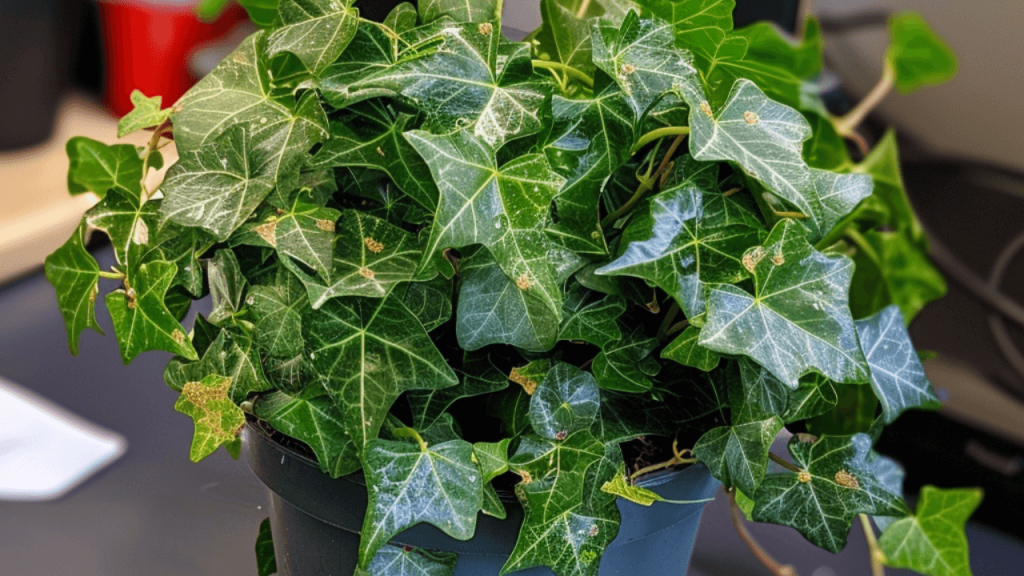
Fungus gnats
It’s essential to identify the pest infesting your Devil’s Ivy for appropriate prevention and control. Small, black flies that thrive in moist soil can harm the plant by damaging its roots.
Regular checks for signs like visible pests, webbing, deformed or discolored leaves, or wilted foliage can help detect early infestations. This timely action can prevent further damage and maintain your plant’s health.
Prevention Measures
Maintaining cleanliness is key to preventing pests on your Devil’s Ivy. Clean the leaves and stems regularly to eliminate dust or debris. Avoid overwatering as damp soil can draw fungus gnats and other pests.
Before introducing new plants indoors, inspect and quarantine them for a few weeks to ensure they’re pest-free.
Provide your Devil’s Ivy with optimal conditions: bright, indirect light, regular water, fertilization, and proper pruning. A well-tended plant is less appealing to pests and more resilient to damage.
By following these strategies, you can reduce pest risks and ensure your Devil’s Ivy thrives.
Proper Plant Care
Providing proper care to your Devil’s Ivy plant is essential for its health and pest prevention. Ensure it gets adequate sunlight, regular watering, and suitable fertilization. Avoid over-watering to prevent creating a moist environment attractive to pests.
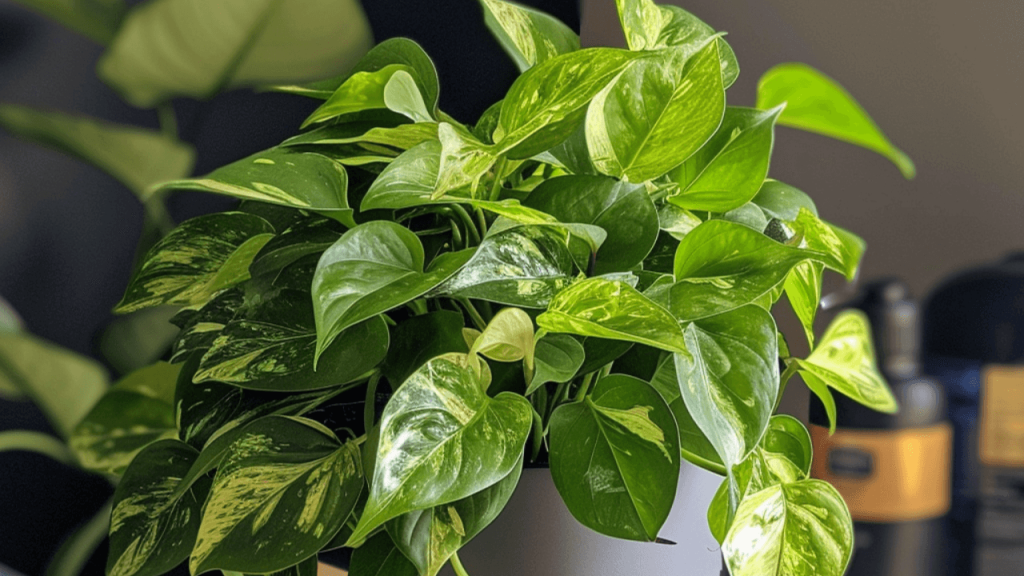
Placement of Plant
For a healthy and pest-resistant Devil’s Ivy plant, provide it with the right growing conditions. Place it in a well-ventilated area with sufficient sunlight. Good air circulation and natural light deter pests. Avoid areas with extreme temperature fluctuations or drafts, as they can stress the plant, making it more prone to pests and diseases.
Quarantine New Plants
It’s recommended to quarantine new plants for a few days before adding them to your existing collection. This prevents potential pest spread. During quarantine, monitor the plant for pest signs. Additionally, inspect all new plants before buying to ensure they are healthy and without pests.
Cleanliness
To prevent pest infestations in Devil’s Ivy plants:
- Ensure regular watering, enough sunlight, and proper fertilization for a robust and pest-resistant plant.
- Avoid over-watering to prevent a moist environment attractive to pests.
- Place the plant in a well-ventilated spot with ample sunlight.
- Quarantine new plants for a few days before introducing them to prevent potential pest spread.
- Clean the plant’s leaves regularly to remove dust or debris.
Following these measures can greatly reduce pest risks, ensuring the health and beauty of your Devil’s Ivy plant.
Natural Pest Control Remedies
If you detect pest infestations on your Devil’s Ivy plant, several natural remedies can help control the issue. Here are some natural pest control methods for your plant:
Insecticidal Soap
Use a solution of mild liquid soap and water to control pests like spider mites and mealybugs on your Devil’s Ivy plant. Mix one tablespoon of soap in one quart of water and apply to the plant’s leaves and stems. Coat the foliage thoroughly and repeat weekly until the infestation is managed.
Neem Oil Spray
Neem oil is a natural pesticide effective against pests on Devil’s Ivy, including spider mites, mealybugs, and scale insects. To prepare a spray, mix one teaspoon of neem oil with a few drops of mild liquid soap in one quart of water. Spray on the plant’s leaves and stems, coating all foliage. Repeat weekly until the infestation is managed. It’s advisable to test the spray on a small part of the plant first to ensure no adverse effects before full application.
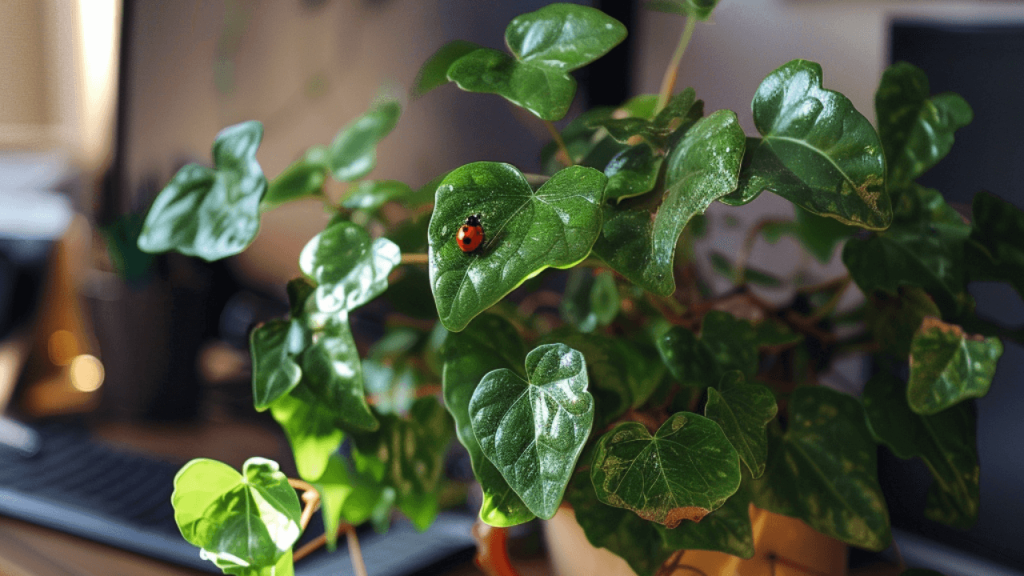
Beneficial Insects
Consider natural remedies for controlling pests on your Devil’s Ivy plant. Introduce beneficial insects like ladybugs, lacewings, and predatory mites, available at local garden centers, to feed on harmful pests.
Neem oil, a natural pesticide from the neem tree, combats pests like spider mites and mealybugs. For a spray, mix one teaspoon of neem oil with a few drops of mild liquid soap in a quart of water. Spray thoroughly on the plant’s leaves and stems, repeating weekly until the pests are managed.
Another option is a soap-water solution. Mix a tablespoon of mild liquid soap in a quart of water and apply to the plant, repeating weekly as needed.
These natural remedies ensure plant safety and are environmentally friendly.
Chemical Pest Control Remedies
Try natural pest control methods first to avoid potential harm to the plant and environment. If the infestation continues and natural methods don’t work, you may need chemical remedies. Choose the right pesticide for the specific pest, ensuring it’s for indoor plants. Avoid using on stressed plants. Minimize pesticide exposure to people and pets by isolating the plant during treatment. Always read and follow label instructions, and consider chemicals as a last resort.
Insecticides
Chemical pest control should be a last resort for Devil’s Ivy plants. If natural methods fail, select an insecticide specific to your plant and its pests. Follow label instructions closely, use recommended safety gear, and apply in a well-ventilated area. Always use chemicals responsibly to protect the environment, your plant, and others.
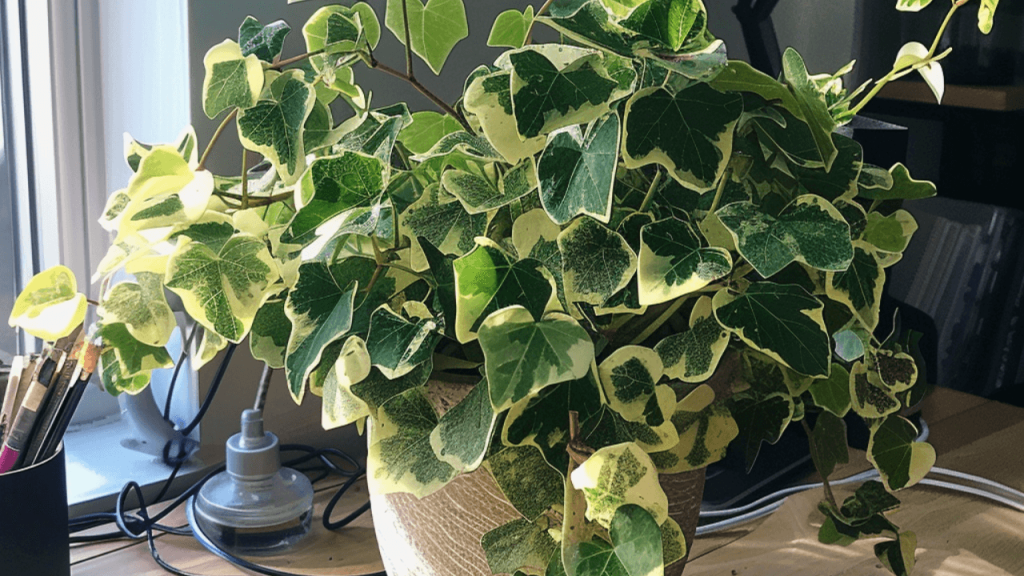
Fungicides
If dealing with soil-borne pests like fungus gnats, a fungicide might be necessary. Choose a product specific to your plant and its pests. While many fungicides can control these pests, always follow label instructions and wear safety equipment. Target only the affected areas, and if possible, isolate the infested plant. Ideally, try natural remedies first and resort to chemicals only when necessary.
Monitoring Your Devil’s Ivy Plant for Pests
Frequently inspect your Devil’s Ivy for signs of pests to prevent spreading. Here are some effective monitoring tips:
Inspect the Leaves and Stems
Regularly check the leaves and stems of your Devil’s Ivy for signs of pests, such as webbing, discoloration, or small holes. Early detection is vital to prevent spreading and significant damage. Inspect thoroughly and often, especially during the growing season when pests are more active.
Check the Soil
Inspect both the foliage and soil of your Devil’s Ivy plant. Soil-borne pests like fungus gnats can damage the roots and affect the plant’s health. Check the soil regularly for insects or larvae to catch problems early. If you spot any pests, act quickly to control the infestation and prevent major damage to your plant.
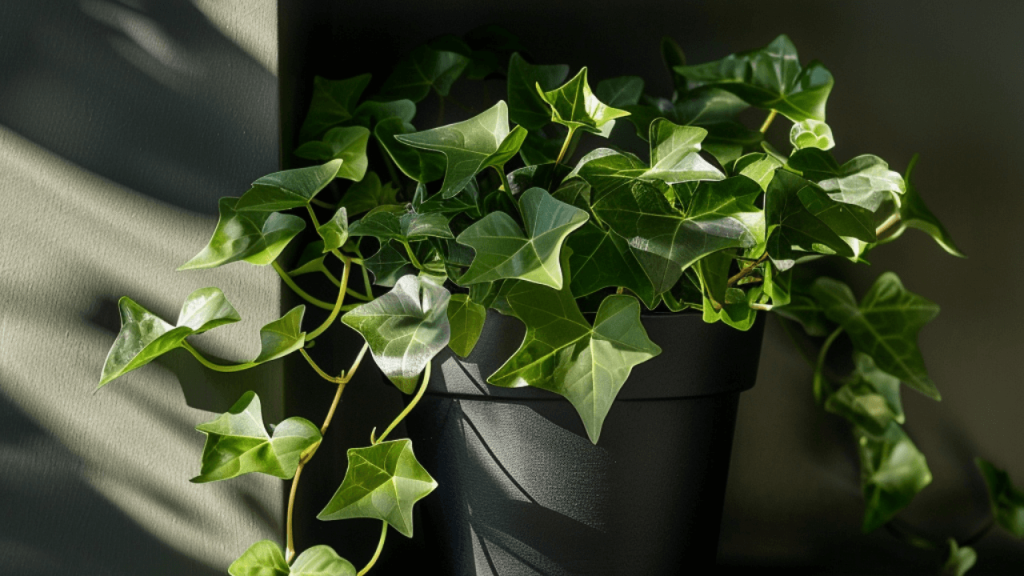
Quarantine Infected Plants
When a pest infestation is detected on your Devil’s Ivy plant, act quickly. Quarantine the affected plant to prevent spreading to others. Move it to a separate location and avoid contact with other plants until the issue is resolved. Clean your hands and tools after handling the infested plant. Monitor the isolated plant closely and use appropriate treatments to eliminate the pests.
Keep a Record
Maintain a record of pest infestations on your Devil’s Ivy plant, noting the pest type and date. This helps identify and prevent recurring issues. Regularly check your plant for signs like webbing or leaf discoloration. Also, inspect the soil for pests like fungus gnats. If pests are spotted, quarantine the plant to prevent spread. Prioritize natural remedies for a sustainable approach to pest control.
